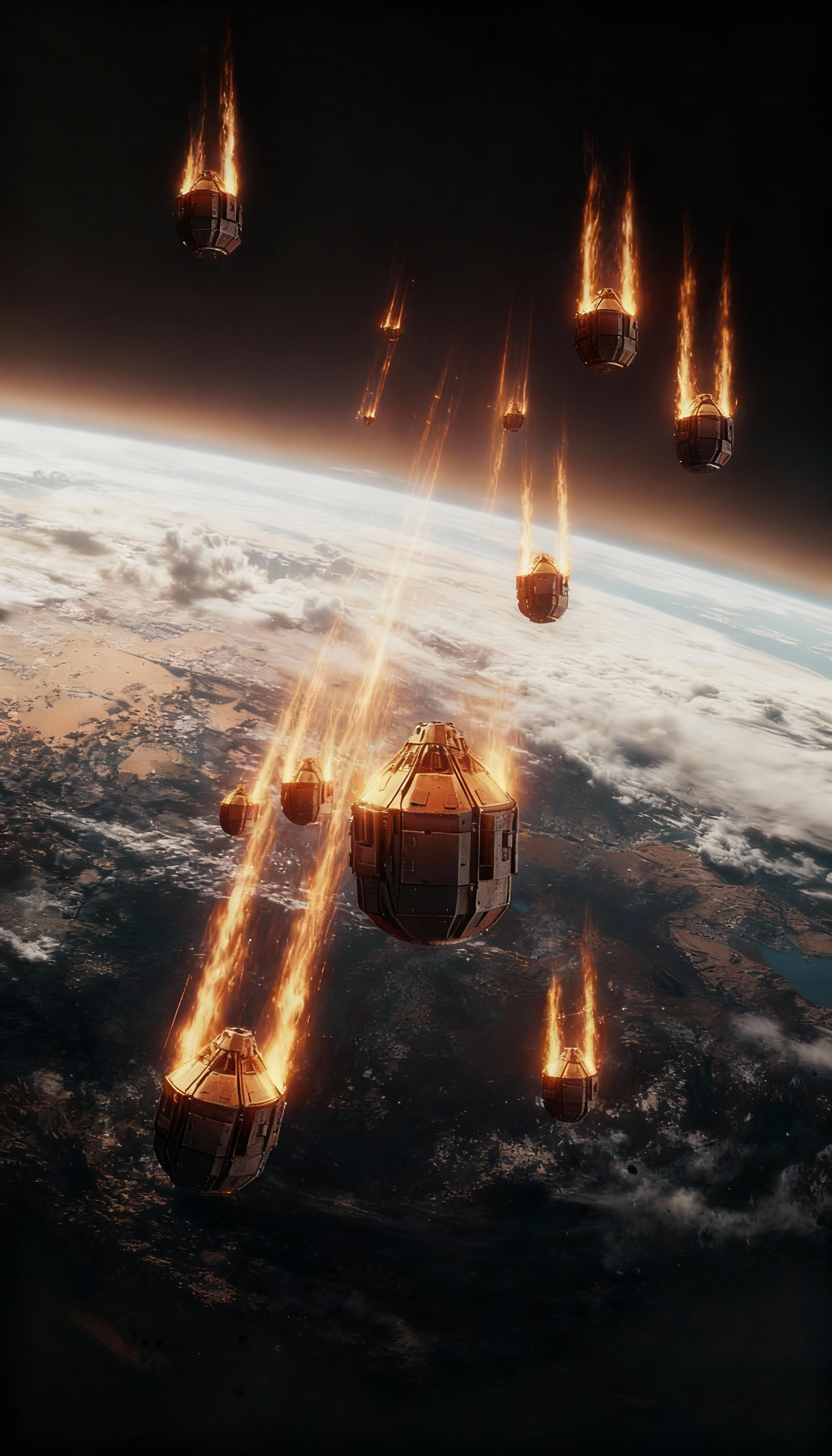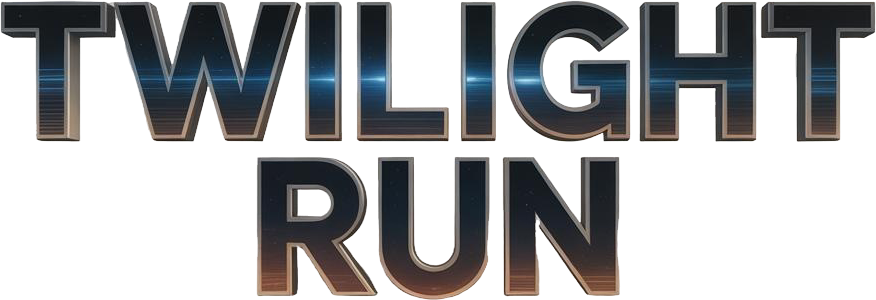Orbital Drop onto Pittman

Day 1: Deployment Orders
The briefing was quick — too quick. We are aboard the USS Liberty, holding orbit above Pittman. The captain just gave the order for a full combat drop. Details were scarce. An MDF garrison on the surface has been under siege for days by an unidentified alien force. Reports describe them as fast, lethal, and equipped with technology far beyond anything we have encountered.
That was all we needed to hear. Within minutes, we were suiting up. Training is one thing; stepping into the unknown is another. My drop pod is prepped and sealed. In a few minutes, I will be falling through Pittman’s sky toward what sounds like the worst battlefield in recent memory.
The usual jokes and chatter are gone. Every Marine is quiet, checking gear, reviewing ammo counts. We have all seen combat before, but this feels different. Facing another human is one thing. Facing something not human — that’s harder to process.
Day 2: The Drop
The inside of a drop pod feels like a coffin. No room to move, just the hum of systems vibrating through the seat. My HUD flickered to life, streaming vitals and mission data I barely saw. All I could focus on was the countdown in the corner of my display. It hit zero, and then gravity tore me downward.
The descent was violent. The pod shook and screamed as friction turned the hull into a fireball. I felt every impact as we cut through Pittman’s atmosphere. Ten thousand meters. Eight. Five. Contact.
The impact hit like a fist from God. The shock absorbers strained but held. For a moment, I saw nothing but smoke and fire. Then the hatch blew, and chaos poured in.
Day 2: Touchdown
The heat of the battlefield hit like a wall. Smoke, dust, and the metallic scent of ozone filled the air. I sprinted from the pod, joining the others as we rallied at the rendezvous point. The ground was a jagged wasteland of rock and craters — a place shaped by constant war. Ahead, I saw the MDF garrison holding a fragile defensive line. Their armor was blackened and their eyes hollow. They had been fighting for too long.
Our mission was simple: reinforce their perimeter and push the enemy back. Nothing about it would be simple.
Day 3: Contact
We never made it to the garrison before the first engagement. A sharp, high-pitched whine cut the air — then plasma fire erupted across the ridge. The ground exploded around us, dirt and glass raining down. We dove behind the rocks, scanning for targets. That’s when I saw them.
Tall, slender figures moving with impossible speed. Their armor looked organic, alive — shifting in color and texture as they moved. Their weapons were sleek, silent, and precise, cutting through steel and flesh alike. I shouted for the squad to return fire, but it felt like shooting shadows. One of our Marines dropped beside me, his chest plate melted through like wax.
We fought our way back to the garrison, firing and falling back in bursts. It wasn’t a battle. It was a hunt — and we were the prey.
Day 4: Defensive Line
We have been pinned at the garrison for more than twenty-four hours. The attacks come in waves, one after another, never giving us time to breathe. The MDF troops fight hard, but they are running on fumes. Every few hours, we regroup, patch our wounded, reload, and brace for the next assault.
These things learn. Every tactic we use, they adapt. Their weapons slice through armor like paper, and their speed defies belief. From my position on the line, I have watched them outrun bullets. Captain Duvall, the MDF commander, briefed us this morning. Reinforcements are still days away. He told us to hold. His face said something else — that he knows we may not last that long.
Day 5: The Night Attack
They came after sunset. Plasma fire painted the sky blue and white, shaking the walls of the garrison. I was on the eastern perimeter when they breached the outer barricade. One of them came at me — seven feet tall, armor rippling like liquid metal. Its eyes glowed cold blue as it raised its weapon. I dove behind cover an instant before a beam cut the air where I had been standing.
We fought in total chaos — shouting, explosions, the flash of energy weapons lighting the dark. We managed to repel the assault, but at a terrible cost. Dozens of Marines are gone, and supplies are running low. We are holding the line by sheer willpower now.
Day 6: Close Call
The northern barricades fell this morning. We were there when the enemy broke through, fast and silent as ghosts. The fight turned to close quarters — knives, rifles, fists. Their strength is unreal, their weapons surgical. Three more Marines died beside me before we pushed them back.
I have not slept in days. None of us have. The adrenaline keeps us upright. Every lull feels like the calm before extinction. We fight, reload, and fight again. There is no room left for fear — only survival.
Day 7: The Turning Point
We thought we had seen their worst. We were wrong. Scanners picked up new energy readings just before the next wave hit. When they came, we saw why. Massive figures — heavier, armored, and armed with weapons that emitted a deep vibration before firing. We call them Bashers.
One of them hit the western wall, tearing through concrete and steel as if it were cloth. We threw everything we had — rifles, rockets, grenades — and still it kept moving. Somehow, by the end, we forced them to withdraw, leaving behind only wreckage and the smell of ozone. The garrison still stands, but barely.
Day 8: The Plan
Captain Duvall gathered what is left of us this morning. Reinforcements are still too far away, and our defenses are breaking. But he has a plan. Our sensors traced the Bashers’ energy signatures to a source deep in the mountains — an alien command site. We are going to hit it at dawn.
It is a desperate gamble, but better to strike first than wait to be wiped out. My company has been chosen to lead the assault. If this is my last entry, let it be known that we fought with everything we had. Pittman will not fall quietly.
— Sergeant Michael Raines, United States Marine Corps, Forward Detachment, Pittman Surface Campaign
